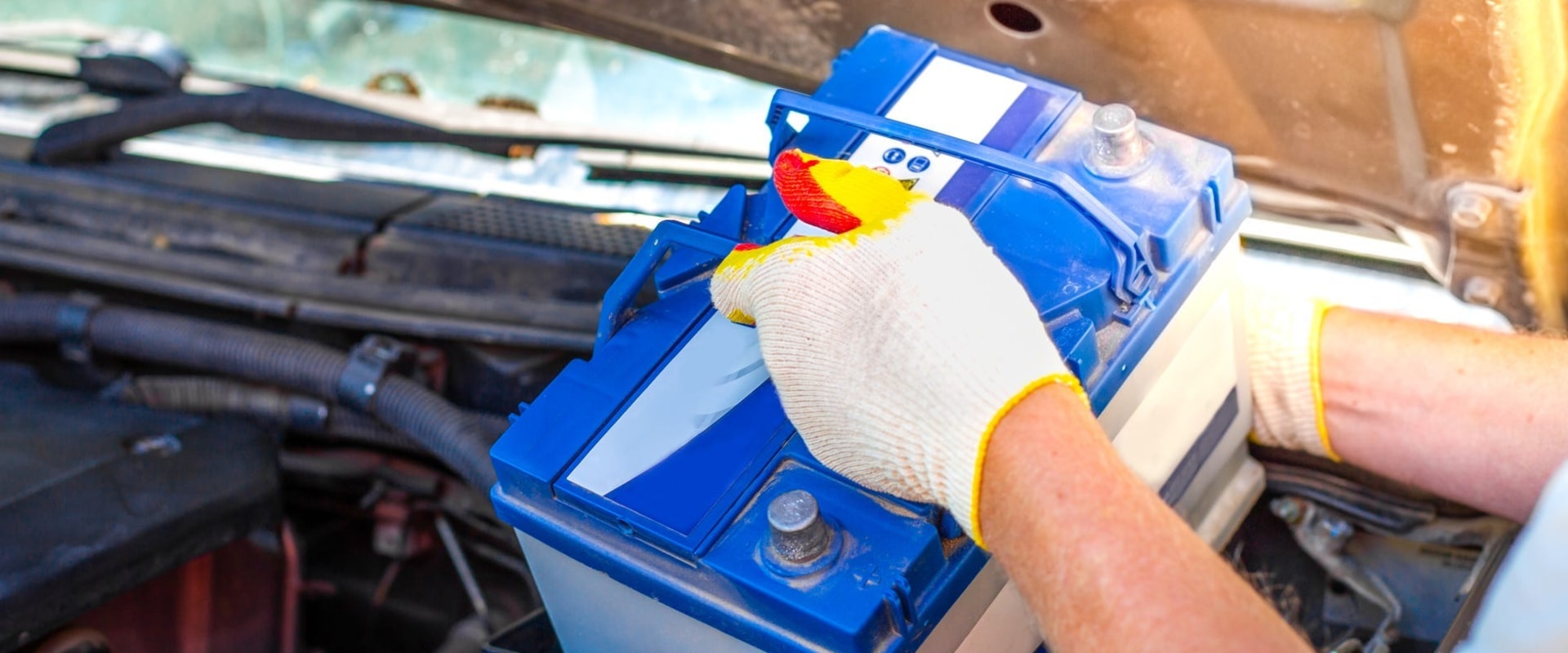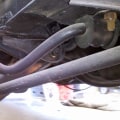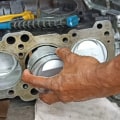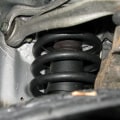Whether you're a classic car enthusiast or a novice DIYer, it's important to understand the basics of battery installation. Installing a battery is a relatively simple process, but it's essential to take the necessary precautions when handling and connecting the cables. In this article, we'll provide some important tips and tricks to help you properly install your classic car's battery and ensure that it runs safely and effectively. With these tips in mind, you can rest assured that your classic car will be running smoothly for years to come!Installing a battery in a classic car is not a difficult process, but it requires attention to detail and knowledge of the proper steps.
Before you begin, it is important to know the tools you need and the different types of batteries available.
Tools
such as a wrench, screwdriver, and socket set are essential for the installation. The type of battery you need will depend on the make and model of your car. You may also need to consider the size and power requirements. Once you have the correct battery and tools, it is time to begin the installation.Mounting the battery is the first step, and it is important to make sure it is securely fastened. Some cars have plastic trays or metal brackets that hold the battery in place. If this is not the case, use cable ties or straps to secure it. The next step is to connect the battery to the car's electrical system.
Checking for power is an important step in this process. Before you attach the cables, it is important to test that there is power running through them. This will help prevent any damage to your car’s electrical system. Now that the battery is connected, it is time to make sure the connections are secure. Use a wrench or socket set to tighten all connections until they are snug.
You should also check for any loose wires or terminals that may have come loose during installation.
Safety
is paramount when working on a car, so make sure to wear protective gear such as gloves and safety glasses. Additionally, always disconnect the negative terminal first when working with batteries. This will help prevent any unwanted sparks. After you have installed the battery, it is important to know how to maintain it properly. Check fluid levels regularly and replace your battery every few years, depending on usage.If your car has an alternator, make sure it is functioning properly as well. While installing a battery in a classic car isn't overly complicated, it can be a daunting task for those unfamiliar with automotive work. If you don't feel comfortable doing it yourself, it is best to have a professional install the battery for you. Doing so will ensure that your battery is installed correctly and safely.
Types of Batteries
When it comes to battery installation for classic cars, it is important to understand the various types of batteries available. Lead-acid batteries are the most common type of automotive battery and are an economical choice.They are commonly used in traditional starting, lighting, and ignition (SLI) applications. Lead-acid batteries are typically composed of lead plates, lead oxide, and sulfuric acid. Lithium-ion batteries are becoming increasingly popular in the automotive industry due to their lightweight and high-energy density characteristics. These batteries can be recharged easily and require little maintenance.
However, they can be quite expensive compared to lead-acid batteries. Absorbed Glass Mat (AGM) batteries are another option for classic car owners. AGM batteries are more expensive than lead-acid batteries, but they offer superior performance and a longer life expectancy. These batteries contain a glass mat separator that absorbs the electrolyte, which prevents spills and allows them to be mounted in any position without leaking.
Tools Needed for Installation
When installing a battery in a classic car, it is important to have the right tools on hand.Wrenches, screwdrivers, pliers, wire cutters and a voltage tester are some of the most essential tools you will need for the job. Additionally, it is helpful to have a rubber mallet and rubber gloves to protect yourself and the battery from any potential damage during the installation. Some classic cars may require additional tools such as a socket set or an adjustable wrench. Depending on the battery type, size, and location, you may also need a funnel for pouring in electrolyte or acid solution. Additionally, if your classic car has an alarm system, you may need a special tool to disconnect it. It is also recommended to use a torque wrench for tightening the battery terminals, as this will ensure that they are securely fastened and safe.
Finally, make sure to have a good quality battery terminal cleaner on hand to clean off any corrosion before you install the new battery.
Safety Precautions
When it comes to working on classic cars, safety should always be your first priority. When installing a battery, make sure you take the proper precautions to ensure your safety and the safety of your vehicle. Always wear protective gear such as safety glasses, gloves, and long-sleeved clothing when working on a car. One of the most important safety tips to remember is to disconnect the negative terminal first. This will help to prevent any short circuits from occurring while you are installing the battery.It is also important to make sure that the clamps are secure and tight, and that there is no corrosion on the terminals. Finally, be sure to keep all tools and wires away from the battery terminals to prevent any accidental contact. By taking the proper precautions, you can ensure that your battery installation process goes smoothly and that you can get back on the road in no time.
Mounting the Battery
Installing the battery in a classic car requires attention to detail and precision. It is essential to know where the battery should be placed in order to ensure it is secure and will provide the necessary power for the vehicle. Before mounting the battery, it is important to check that the area where the battery will be mounted is clean and clear of any debris or dirt.This will help prevent any corrosion or damage to the battery and its terminals. Once the area has been prepared, use a piece of wire or a strap to secure the battery in place. Ensure that the battery is firmly mounted and that there is no slack in the straps or wire. If necessary, secure it with nuts and bolts.
Once the battery is installed, it should be connected to the vehicle's electrical system. This can be done by connecting the positive and negative terminals of the battery to the respective terminals of the vehicle's electrical system. Finally, it is important to check that the battery is receiving power and that all connections are secure. Once everything is connected properly, your classic car should be ready for use.
Maintaining Your Battery
After installing a battery in a classic car, it is important to maintain it properly. This includes checking fluid levels periodically, and replacing the battery as needed. The frequency of maintenance depends on the make and model of the car. Generally, the battery should be checked at least every six months.It's also important to check the fluid levels in the battery to make sure they are at the correct level. If the fluid levels are low, it could indicate a problem with the battery. If a battery needs to be replaced, it's important to select one that is compatible with the make and model of the car. If you're not sure which type of battery to buy, consult a professional or refer to the vehicle's owner's manual.
Once the new battery has been installed, it's important to test it regularly and ensure that it is charging correctly. In addition, it's a good idea to keep an eye out for any signs of corrosion on the terminals of the battery. Corrosion can cause problems with electrical connections and can reduce the life of the battery. If there are signs of corrosion, use a wire brush or chemical cleaner to remove it.
Finally, if you're not comfortable performing maintenance on your battery yourself, it's best to take your car to a professional for service. A qualified mechanic can inspect and maintain your car's battery to ensure that it is in good condition and working properly.
Getting Professional Help
Installing a battery in a classic car can be a tricky process, and it's important to ensure that it is done correctly. If you are not comfortable doing the job yourself, it is best to hire a professional to install the battery for you. Professionals will have the experience and know-how to make sure that the job is done correctly.They will also be able to check the battery and its connections for any potential problems that could arise in the future. Hiring a professional for the job also means that you will be able to get expert advice on how to maintain the battery in the future. A professional can provide you with tips and advice on how to care for your battery, as well as how to check it regularly for any signs of damage or deterioration. This will help ensure that your battery lasts longer and stays in good condition.
In addition, a professional will have the right tools and equipment to do the job properly. They will be able to use specialized tools and components that are designed specifically for classic cars, ensuring that your battery installation is done safely and correctly. Finally, hiring a professional for the job can also give you peace of mind. Knowing that an expert is handling the installation gives you assurance that everything will be done according to the manufacturer's instructions, giving you confidence that your classic car will remain in good condition for years to come. Installing a battery in a classic car requires an attention to detail and knowledge of the proper steps.
To ensure a safe and successful installation, it is important to have the right tools, choose the right type of battery for your car, follow safety precautions, and consider getting professional help if needed. Additionally, it is important to maintain the battery regularly to ensure it lasts as long as possible. With the right preparation and care, you can successfully install and maintain your car's battery for years to come.








Leave Reply